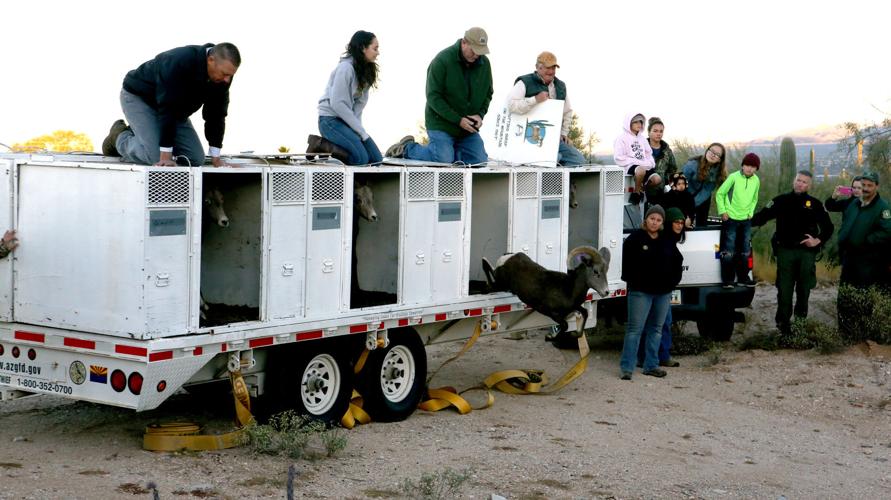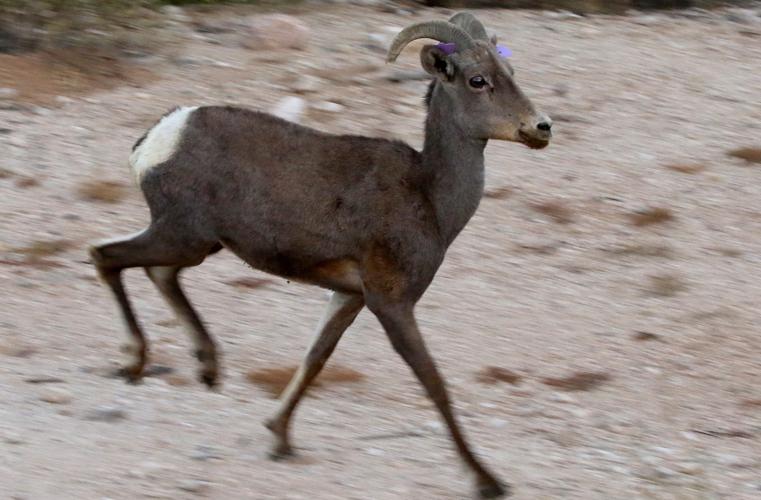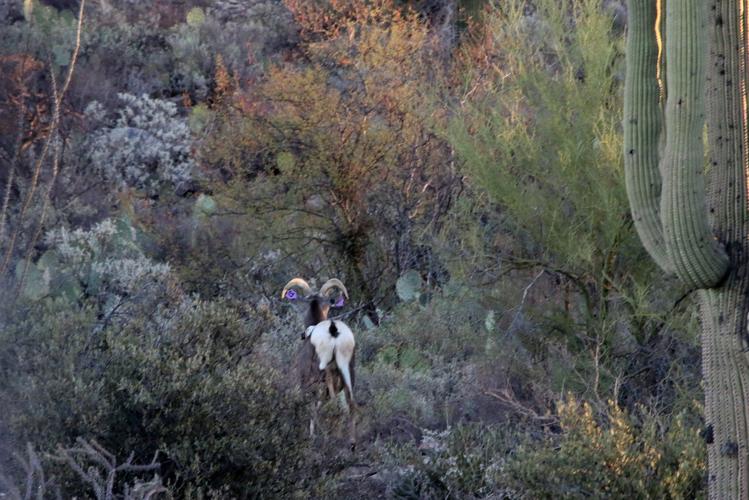Twenty bighorn sheep — transplants from mountains near Yuma — bounded out of a transport truck and into the Catalina Mountains early Tuesday morning.
It was the fourth relocation of bighorns in as many years, part of an ongoing effort to rebuild a herd that disappeared from the Catalinas north of Tucson in the 1990s.
“We brought in 20 sheep from the Plomosa Mountains — 15 ewes and five rams,” said Mark Hart, spokesman for the Arizona Game and Fish Department. “We now have 85 bighorn sheep in the Catalina Mountains.
“It was a very successful capture and release operation,” Hart said. “Now it’s up to the bighorns.”
The fleet-footed animals leaped from the truck when doors were opened and dashed past wildlife officers, reporters and photographers — heading toward the Pusch Ridge habitat where sheep from the previous relocations roam.
Brian Dolan, a past president of the Arizona Desert Bighorn Sheep Society and a member of a citizens advisory committee on the Catalina bighorn project, watched Tuesday’s release and nodded with satisfaction as the animals headed for their new home.
PASSIVE MANAGEMENT
“We’re going to take a more passive approach to managing the bighorns in the future,” Hart said. “Specifically, we’re no longer going to actively pursue mountain lions that prey on bighorn sheep.”
In earlier stages of the project, a total of eight mountain lions were killed for preying on bighorns. The lion killings drew strong opposition from many citizens who maintained that it’s wrong to kill lions for doing what predators do naturally to survive and feed their young.
“The first phase of the project is a success based on today’s release,” Hart said. “With 85 sheep on the mountain, that can be viable moving foreword without active management.”






